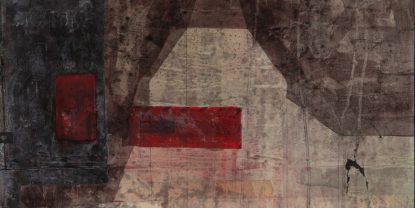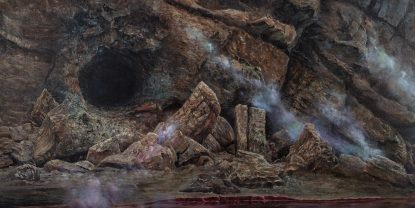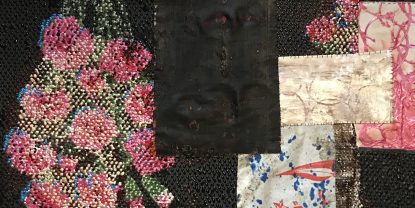VOLTA Basel 2021
Group Exhibition
September 20 — September 26, 2021
“The past was a dream, wasn’t it? And who ever remembers dreams?” — Ivan Turgenev
For its inaugural participation in VOLTA Basel, Mohsen Gallery represents a first-hand account of the passion and enthusiasm of a generation of Iranians. Majid Biglari, Zahra Ghyasi, and Samira Hodaei represent a large, young generation struggling not only to deal with the difficult situation they are facing, but also to transform, manipulate, and modify it so as to achieve their personal and generational dreams and aspirations. Considered as a whole, these works suggest a crevasse between desire and reality in the world of this particular generation: a free fall from the childhood dreamland to the depths of a reality, the opposite of which seem to have been promised.
A consistent feature in Majid Biglari’s works is that he carefully hides a significant part of their visual semiotics, while he invites his audience to participate in the process of giving meaning and making sense of what they experience. Following the course of his recent procedure, Biglari has concealed the clues in “Soot, Fog, Soil” installation so as to close the gap between his unlived dream life and his complex, tumultuous lived experience. In the background of his works, he utilizes recycled tinplate that had been used in the rooftops of midtown houses. The tinplate was once cans of motor oils and other petroleum products; containers of a promised blessing but, as it turns out, we only seem to be punished by its inescapable doldrums. Using rough collages and assemblages made of the contents of a found suitcase, including letters, postcards, and family photos from the 1980s, Majid then creates a familiar narrative of middle-class immigrants to the United States, the land of dreams. Painting over these documents, however, he disguises the full narrative from our eyes: it is as if he changes the resolution of reality by blurring and focusing the audience’s camera. Perhaps he can finally be able to reconcile the heterogeneous and complex experience of his life with his not-yet-lived dream.
Zahra Ghyasi, who is from the same generation as Majid and Samira, has created a fantastical land to tolerate the present thorny reality. The hallucinatory architecture of her world is marked by fanciful frolicsomeness and erotic euphoria. Zahra’s work is always the outcome of the vicious circle of her wandering, dreaming mind that oscillates between reality and fantasy. She is searching for a balance that seems to be elusive. Unlike her earlier works that had references to the outside world and philosophy, the works of the recent period of her career are emphatically self-referential: self-portraits of a wanderer in a marvelous planet in her mind and a safe haven for a free, cheerful life in which it is possible for desires to be manifested and satisfied. In order to bear the turbulent outside reality, Zahra creates a world in which every desire gets a chance to blossom and bear fruit.
It has been some ten years since Samira Hodaei migrated. She is now living between Berlin and Tehran. She spent her childhood in the oil-rich province of Khuzestan. In the recent period of her career, she has been focusing on examining the huge gap between the golden dream of oil and the reality of the corruption it brings. In her work, Samira recreates the luncheon cloth that Iranian grandmothers spread with good wishes and blessings for their families. With the help of the same women and with a similar approach to Majid, yet using more flexible materials, she sews, layer by layer, cashmere luncheon cloths and sacks of rice, the predominant staple food of Iranians, and covers them with paint and bitumen (a substance produced through the distillation of crude oil). Between these layers, she conceals her childhood memories and attachments from the eyes of the audience. By placing her self-portrait and sewing together fragments from these forty years, she tries to get through her complex and layered narrative, both to alleviate her sense of nostalgia, and, similar to a therapist, she seeks to mend her relationship with what is really out there by reconsidering her childhood aspirations and those of her generation.
Considered side by side, the works of Majid, Samira, and Zahra amount to a self-portrait of a generation who were conceived in the womb of dread and anxiety of the war, and their lives are shaped under the compulsions of giving up their desires, seeking to fulfil their dreams anywhere but their homeland; whether in a material heterotopia or a surreal, hypothetical world. It is a courageous confrontation with the overwhelming power of destruction using their only weapon: their minds. It is tantamount to stripping away their inwards to make manifest what is still the source of hope and passion for living and creating.


